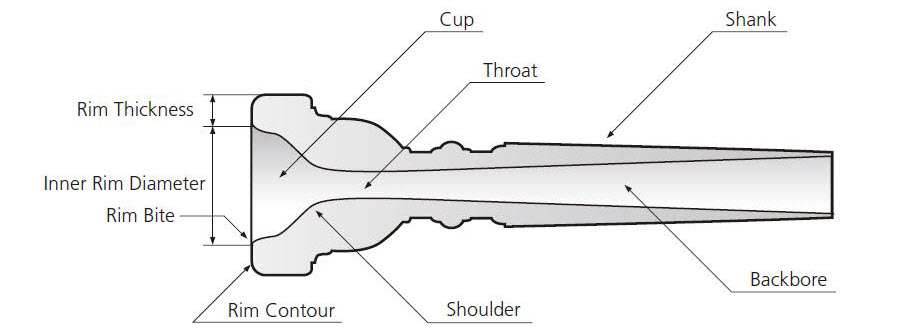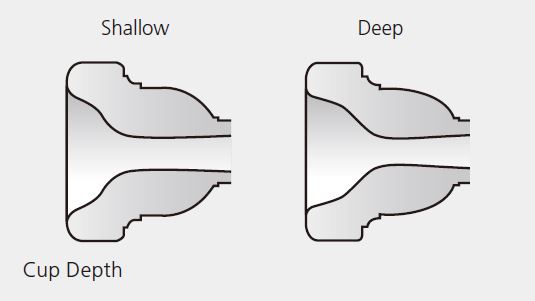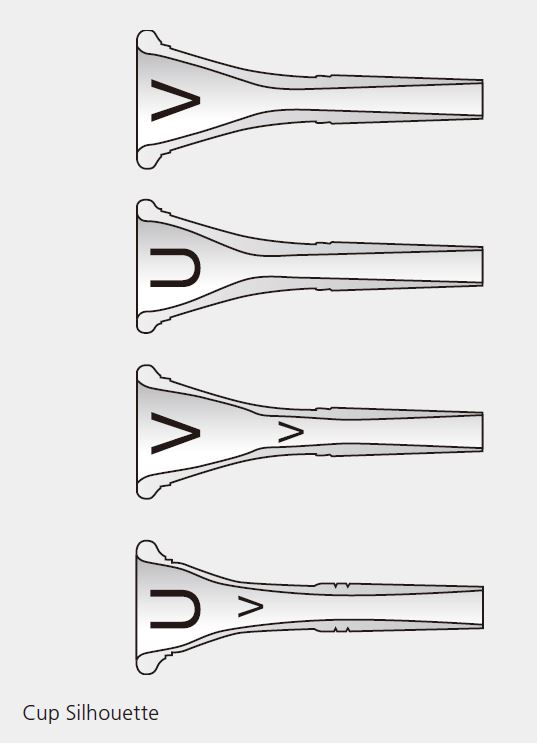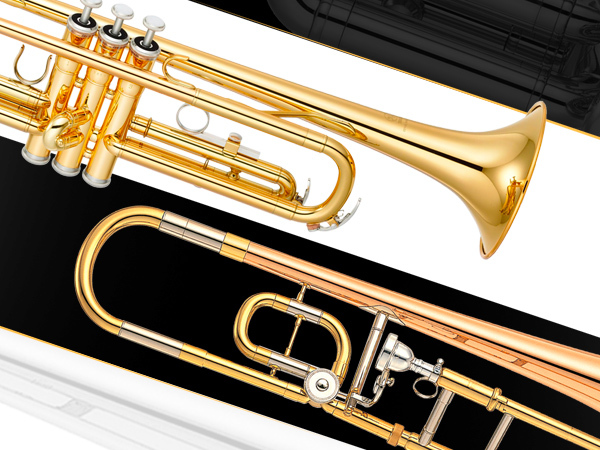Guide to Brass Mouthpieces, Part 2: Cups and Rims
Small details can make a dramatic difference in your playing.
(This is the second installment in our four-part series about brass mouthpieces.)
As we began discussing in Part 1, brass mouthpieces seem relatively simple at first glance. After all, they’re basically just a metal funnel, right? But a closer look shows that there are many details about mouthpieces that have a big impact on how they feel to the player – and, more importantly, the quality of the sound they produce. A seemingly tiny shift in the contour of the metal, or a miniscule difference in the size of the openings, can dramatically change a mouthpiece for the better (or worse). Please note that while the images here mostly show trumpet mouthpieces, these explanations work equally well for all brass instruments – such as trombones and tubas.

Inner Rim Diameter (Cup Width)

The first thing that most people think about is the size of the opening of the cup, as measured from the inside edge of the rim across to the other side. This inner rim diameter is typically the most obvious element of a mouthpiece’s model number – for example, if someone says they use a “7” or a “14” or a “51,” that number is probably referring in some way to this inner rim diameter. The differences from one mouthpiece to the next can be very small, with sizes typically measured in either thousandths of an inch, or fractions of a millimeter.
In general, a small inner rim diameter makes it easier to play high notes and can increase endurance, but the volume of sound produced will be restricted. This is because less of the player’s lip can physically fit inside the ring of a smaller mouthpiece, restricting how much tissue is vibrating to create the sound and how many muscles around the mouth are used.
A larger rim diameter, on the other hand, provides plenty of volume and easier low tones but endurance may be sacrificed, with more of the lip fitting inside the mouthpiece and forcing more of the muscles around the mouth to work while playing. This tradeoff between how much of the lip fits inside the mouthpiece and how many facial muscles are needed to control the buzz is an extremely important consideration for a player – and finding the right size for your individual needs may take some trial and error.
Cup Depth

Almost as important as the distance across the cup is the depth of the cup.
In much the same way that a smaller cup opening helps high notes, a shallower cup can also give extra support when playing very high and produce a brighter tone, but will restrict the volume and make low notes harder to play.
Conversely, a mouthpiece that has a deeper cup will generally produce a darker tone quality and make low notes easier to play – but you’ll work harder for the high notes. Once again, finding the right balance between providing enough support for high notes – while not choking off your low notes or making your tone too bright – will be a matter of personal preference.
Cup Shape

While the inside shape of the cup isn’t usually obvious on most mouthpieces, the way the metal tapers as the cup gets deeper can have a subtle effect on the sound. In broad terms, most mouthpiece cups have a shape that’s somewhere between a “U” and a “V.” The more “U”-shaped a cup is, the brighter the sound and the easier it is to play in the high register. As the cup approaches a “V” shape the sound becomes darker and the lower register becomes easier to play.
These differences may not be as obvious with standard trumpet or trombone mouthpieces, but they can be quite pronounced in cornet, French horn, and even some tuba mouthpieces. Some French horn mouthpieces employ a “double cup” design — essentially a combination of the “U” and “V” shapes — to facilitate playing throughout the instrument’s range.
Rim Contour and Thickness
The shape and thickness of the mouthpiece’s rim is extremely important to how comfortable the mouthpiece feels, since it comes into direct contact with the player’s lips. The rim contour also has some effect on lip flexibility, attack clarity and pitch control.
A thick or wide rim with a broad, flat surface provides greater lip contact area for easier high notes and extra cushioning for better endurance. However, lip movement is limited so you lose some tonal flexibility.
A thin or narrow rim with a rounded top offers plenty of control and flexibility over a wide range, but the relatively sharp contact area can quickly cause fatigue and even pain if too much pressure is used.
As with the other elements of a mouthpiece, finding a rim that has the right mix of comfort and performance may require some trial and error. Beginning players are probably better off choosing a rim of medium thickness, but a more experienced player should feel free to experiment with different rim shapes to see how they change the feel and response of the mouthpiece.
Rim Bite
Different than the shape of the rim itself, the rim bite describes how steep or sharp the inside corner of the rim is as it drops down into the cup.
Mouthpieces with a sharp bite generally make it easier to produce accurate, stable pitch and a rich tone. If the bite is too sharp, however, lip control is limited and it becomes difficult to make smooth note-to-note transitions. A sharp bite can also be painful on the lips and reduce endurance.
At the other extreme a round, very soft bite may be comfortable to play, but will produce a blurred attack and poorly defined pitch.
Click here for Part 3, where we discuss how the throat and backbore change the way a mouthpiece plays and feels.
Click here to learn more about the extensive lineup of Yamaha mouthpieces.















